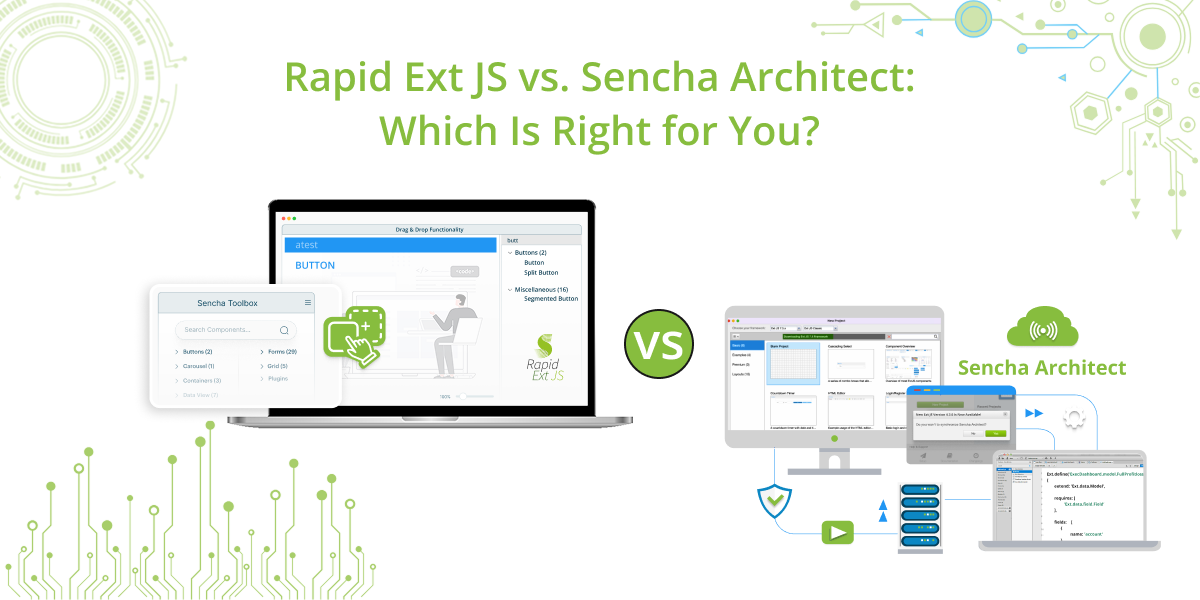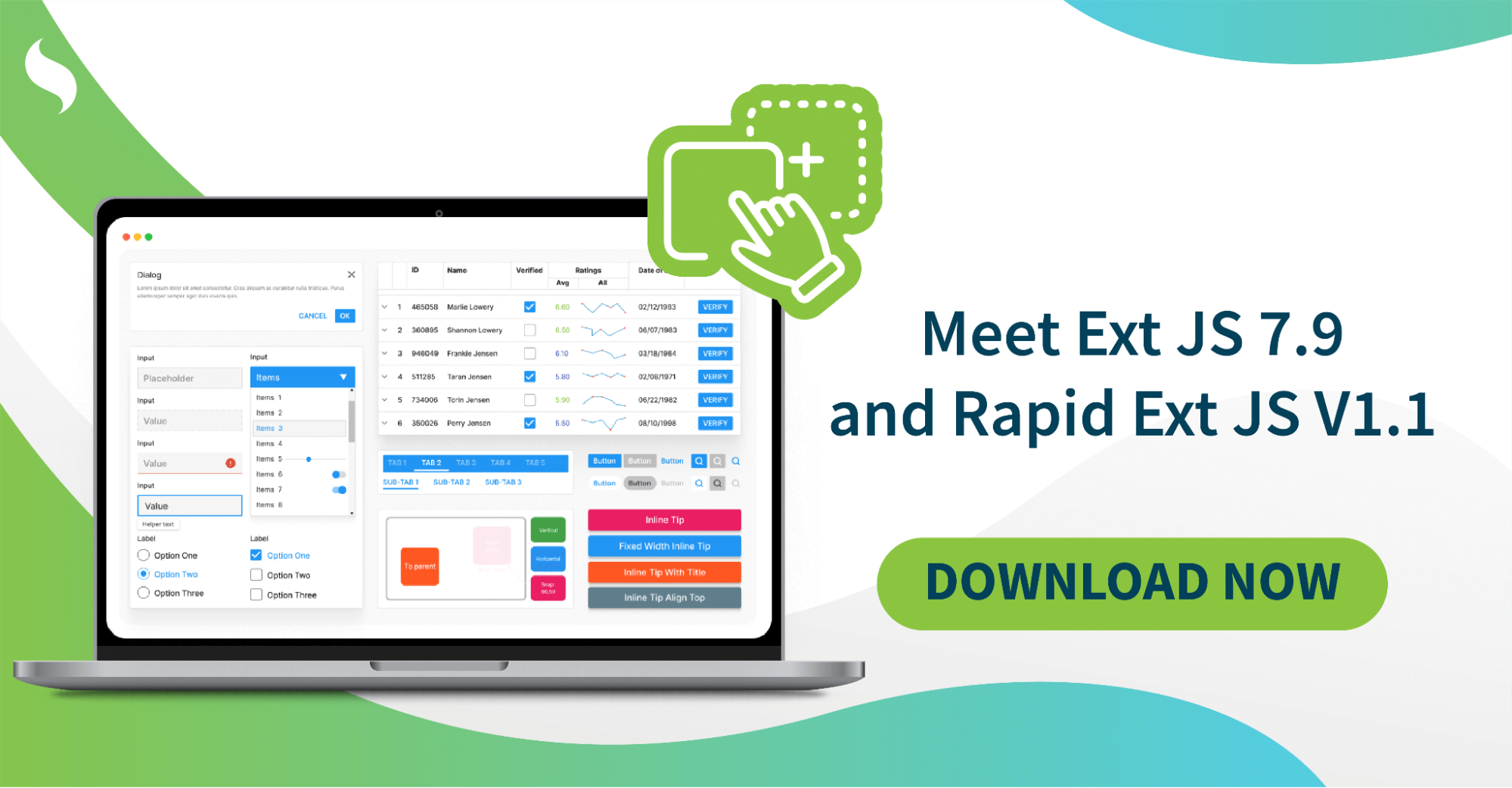Why Low-Code Application Development Software Is Gaining Momentum in 2025
In 2025, the development of Low-Code Applications has reshaped the entire structure of software development. This shift allows companies to develop robust apps in minutes. It also eliminates the need for high resource costs. Companies today face increasing pressure to undergo digital transformation. They must also provide tailor-made solutions to meet modern demands. Low-code tools play a vital role in achieving these goals.

Web App development has never been simpler for developers. It is now accessible even to people with minimal technical knowledge. With low-code platforms, the process requires little to no coding. This accelerates the development process. It reduces costs while simultaneously boosting creativity and productivity. The goal of this blog is to address a key question: Why are Low-Code Platforms gaining momentum so rapidly? We will explore three major points in this blog. These include why time-to-market is becoming shorter, how cost savings are achieved, and why agility is being embraced so passionately today. Low-code innovations, with their ability to drive action, empower a software application development company to digitalize and modernize faster. Other trends, like AI, automation, cross-platform application software development services, and advanced data management, are also emerging alongside. We will also analyze the future of Quick Application Development tools. In today’s fast-paced world, it’s hard for businesses to compete. Staying ahead of visionary competitors is even more difficult. This blog aims to explore these tools in-depth. It seeks to highlight why they are essential for the future. Ultimately, this blog aims to address disadvantages and provide clarity. Let’s get started.
Understanding Low-Code Platforms
Best Low-code platforms solve the issue of lengthy web app development cycles. They eliminate the need for extensive manual coding, which simplifies the app development process. Everyone, whether they have a technical background or not, can use a visual interface. Drag-and-drop features make creating web apps easy. With little to no coding required, these platforms lower the barrier to entry. Backend development also becomes simpler with low-code development platforms. They offer pre-built templates and components, allowing users to focus on app design, logic, and integration. This reduces the tedious backend tasks associated with the traditional web application development process. Businesses increasingly turn to low-code platforms for their benefits. These tools optimize how web app developers build and deploy apps. In today’s digital era, low-code platforms ensure a smooth transition, offering both flexibility and technical expertise. They are time-efficient and enable businesses to adapt quickly to changing situations.

Key Drivers Behind the Surge in Popularity
1. Increased Demand for Faster Time-to-Market
Low-code platforms cater to businesses aiming to bring products to market quickly. The demand for new features and products within limited timeframes is rising. Low-code development addresses this by automating much of the coding process. Developers can achieve faster outcomes as a result.
2. Cost Reduction in Development and Maintenance
The adoption of visual development platforms significantly reduces costs. Automation of repetitive processes and provision of reusable components are key factors. They reduce the need for large development teams. Consequently, development and maintenance costs drop significantly.
3. Demand for Customizable and Scalable Solutions
As organizations grow, their needs evolve. Outdated solutions often fail to meet new requirements. Low-code platforms address this challenge with flexible frameworks. These frameworks allow for precise customization. They are also scalable, adapting to an organization’s expanding needs.
4. Increased Agility and Adaptability
Market dynamics change rapidly. Organizations must keep pace with these shifts. Low-code platforms enable real-time application updates. This ensures companies remain relevant and competitive.
5. Streamlined User Experience Design
User experience is crucial for any application’s success built through free mobile application development software. Low-code platforms simplify the UX design process. They provide intuitive tools for developers. These tools help create apps that are user-friendly and leave customers satisfied.
How Low-Code Development Enhances Digital Transformation
Low-code development tools have transformed how businesses embrace digital change. Firms can build best application development software solutions tailored to their needs in record time, thanks to integrated development environments and visual development capabilities. These platforms are also cost-effective, reducing time and effort compared to traditional web application development methods. This enables firms to remain dynamic in evolving environments. For example, L’Oréal improved internal processes using low-code development. These tools enhanced customer care custom software application development services and stock management. Applications were developed and deployed faster without lengthy development cycles, thanks to cloud application development software. Mayo Clinic is another success story. Low-code platforms helped them manage patient care and administrative tasks more effectively. This led to improved services and greater overall efficiency. Low-code development fosters collaboration between business and IT teams. Non-technical users can participate in app development, promoting interdepartmental cooperation and accelerating progress in digital transformation. These low-code development tools enable firms to quickly create web applications without extensive coding knowledge.
Emerging Trends in Low-Code Development
1. AI and Automation Integration
AI capabilities like predictive analytics and natural language processing are being incorporated. They make applications smarter. Automation tools streamline tasks such as testing, deployment, and updates. This reduces manual effort and speeds up processes.
2. Cross-Platform Development Focus
The demand for apps accessible on various devices and operating systems is growing. Low-code platforms now support web, mobile, and desktop development. This eliminates the need to create separate applications for different platforms.
3. Advanced Data Management
Data management is a critical issue in the digital age. Low-code platforms simplify real-time data processing. They allow seamless interaction with multiple databases. Users can design data-centric applications without complex coding procedures.
The Role of Low-Code Development in Reducing Time-to-Market
In 2025, the need for faster time-to-market has become more critical than ever for businesses striving to stay ahead of their competitors. Low-code platforms have revolutionized how quickly companies can develop and deploy applications by simplifying and accelerating the development process. With visual interfaces, drag-and-drop features, and pre-built components, these platforms reduce the complexity of coding and allow for faster iteration. Developers can focus more on the core logic and user experience rather than spending time on repetitive tasks, which results in quicker product launches.
For businesses, this means being able to deliver products faster, adjust to market demands quickly, and continuously improve applications based on user feedback. Low-code platforms often provide best application development software options that incorporate cloud hosting and automated deployment, further streamlining the entire process. Additionally, they allow companies to take advantage of free application development software tools, reducing costs significantly. As the demand for rapid development grows, low-code platforms will continue to play a central role in helping businesses meet these expectations, offering them a competitive edge in fast-paced industries. The ability to create and deploy applications faster is a game changer, especially with best mobile application development software that enhances mobile solutions.
How Low-Code Development Cuts Development Costs for Enterprises
Cost efficiency is one of the primary drivers behind the growing adoption of low-code platforms. Traditional software and application development often require large teams of developers, extensive testing, and long development cycles, which can be expensive. Custom software application development usually requires high expertise and labor, making it a costly process. Low-code platforms dramatically reduce these costs by automating much of the development process. They allow both technical and non-technical users to participate in creating applications, reducing the dependency on large specialized teams.
With reusable components and templates, development time is cut down, and maintenance costs are minimized. Additionally, because low-code platforms often support cloud application development software and automated deployment, they reduce infrastructure costs and the need for on-premise resources. By lowering the barrier to entry and making app development accessible to a wider range of professionals, businesses can focus their resources on innovation and market growth rather than on expensive development cycles. In 2025, the economic advantages of low-code platforms will be even more pronounced, making them an essential tool for companies looking to optimize their budgets. Companies can rely on custom software application development services to leverage these platforms for creating scalable and cost-effective solutions with fewer resources.
The Future of Agility in Software Development Through Low-Code Platforms
Agility has become a key requirement for businesses to stay relevant in today’s dynamic market environment. Low-code platforms have played a pivotal role in enhancing organizational agility, enabling businesses to adapt to changing conditions quickly and efficiently. These platforms offer flexibility and allow teams to make real-time updates to applications, whether in response to user feedback, market changes, or new technological developments.
With free mobile application development software and tools for cross-platform deployment, businesses can quickly roll out updates across multiple devices and operating systems without additional development effort. The ability to rapidly deploy and update applications while maintaining a user-friendly interface and optimized performance ensures that companies can remain competitive in a fast-evolving digital landscape. Low-code platforms not only support custom software application development but also streamline the development of applications across various platforms. As businesses strive to stay ahead of competition and meet evolving consumer expectations, low-code platforms will continue to be a driving force behind agility and innovation in software development. These platforms, integrated with best mobile application development software, help companies remain adaptable, offering a seamless experience for both users and developers.
The Future of Rapid Ext JS in Low-Code Development
Ext JS combines the simplicity of low-code platforms with powerful features. It enables the development of complex user interface applications. Low-code platforms enhance Ext JS by adding extensive customization options. This speeds up the development of intricate applications, even for up to ten users. With its drag-and-drop functionality, Rapid Ext JS simplifies the process for users, allowing them to build native apps without needing extensive coding knowledge. The integration of data models into the platform enhances its capabilities, making it suitable for Rapid Web App development and mobile app development. Cross-platform capabilities will improve further. Future low-code platforms will feature better mobile app creators and advanced data management. Ext JS application development software free download will continue providing ready-to-use components and UI elements. This combination of low-code and Ext JS open source application development software will accelerate project management, enabling faster completion of tasks. The inclusion of workflow automation and integration with tools like Google Sheets will make managing data and tasks easier. As demand for versatile programming languages and tools rises, Ext JS best android application development software remains a valuable asset for developers looking to create robust mobile and native apps without the complexity of traditional coding.

Conclusion
In 2025, low-code custom software development is revolutionizing the best mobile application development software creation, allowing businesses to rapidly create apps and enterprise apps with ease. A code-less application development software enables both technical and non-technical users, including citizen developers, to develop apps quickly and efficiently, fostering innovation. With the rise of no-code platforms, creating progressive web applications has never been easier. These platforms support rapid application development software, empowering businesses to adapt quickly to market changes. Features like version control further streamline the process of managing custom software application development, whether for web or Android apps, and application development software. Low-code platforms support the development of cross-platform apps, including integration with browsers like Google Chrome. This flexibility and speed in developing apps will continue to transform the free application development software industry, making it a cornerstone of the future of application development. However, you must choose the best software for desktop application development. Ext JS also gives you custom software application development solutions.
FAQs
Can Low-Code Platforms Be Used to Develop AI-Powered Applications?
Yes, they can. Low-code platforms support AI integration. They enable features like predictive analytics and automation.
What Is the Role of Citizen Developers in the Low-Code Ecosystem?
Citizen developers play a key role. An application software developer can create apps without advanced coding skills. This accelerates innovation and speeds up custom software application development.
Why Is Cloud-Native Development Important for Low-Code Platforms?
Cloud-native software and application development is crucial. It ensures scalability and flexibility. It also enables seamless deployment across different environments.
How AI Will Change Software Development and Applications?
The integration of AI auto-generative algorithms into software development would change automization, code writing, bug detection, and employee interface customization.
How Is a Software Application Developed?
Software applications go through planning, coding, testing, deploying, and maintaining support.
How Long Does It Take To Develop a Software Application?
There are different stages of development with a broad range in time, but design complexity and what features are included impact the time the most.
How Much Does It Cost to Develop a Software Application?
How complicated the application is, its extent, and what resources one has will dictate if costs begin from thousands of dollars or scale into the millions.
Is Application Developer and Software Developer Same?
No, While software developers have greater systems to work on, application developers focus and specialize in specific application development.
Is Application Development the Same as Software Development?
No, mobile application tools are the focus of application | software development, while other software solutions make up the development for software with various claims.
What Do Application Software Developers Do?
The main responsibility is the construction, testing, and maintenance of software applications from the user perspective.
What Does a Software Application Developer Do?
The specialist constructs, deploys, and develops software applications in order to maximize their effectiveness, achieve zero setbacks, and give the best possible experience to the end-users.
What Is Rapid Application Development in Software Engineering?
RAD is an example of a service-oriented evolution model where utmost attention is paid to the incremental delivery of products and quick prototyping, progressive refinement, and delivery of services. A new software application might be developed using RAD methodology if the time limit to develop software is extremely tight along with the need for frequent change incorporation.
Which Software Is Used for Android Application Development?
The Java or Kotlin programming languages and Android Studio, an IntelliJ-based IDE, are the most common tools employed during Android application development. Note that the XML markup language is utilized in Android application development as well.
How Do Secure Software Development Concepts Support Protecting Applications?
Secure software development processes need to be integrated on design and development holistic views, thus helping to capture scope boundary weaknesses. Software application security must provide solid protection and defense mechanisms against potential threat or risk actions.
Transform app development with Rapid Ext JS – build fast, scalable, and powerful solutions today!

When it comes to developing robust, enterprise-grade web applications, Sencha provides some of the most…

The Sencha team is excited to announce the latest Ext JS version 7.9 and Rapid…

It is important to select the best app development software with proper instructions that enhance…










